REVIEW: Mega Man Battle Network Legacy Collection Connects Past and Future
A Battle Chip off the old block
As a ten year old, two things shaped me into the person I am today: Mega Man and the internet. That explains a lot, I’m sure. Admittedly, there were probably some other things that helped too. At the very least, both of these two things factor heavily into why I’m writing this review. Mega Man connected me to many of my hobbies, including video games, drawing (more on that at the end!), and even writing. The internet connected me to the wider world of people who share similar interests, providing me an outlet to bounce my ideas off of other people. That includes you, my latest victim, who happens to be reading this right now.
Mega Man Battle Network Legacy Collection encapsulates the importance of connections; the kinds of connections that Mega Man creates and the ones that the internet creates. Collections inherently force people to look backwards, and the Battle Network games are fascinating time capsules. This series holds a unique position in the Mega Man dynasty as its most potent push for relevance. It moved Mega Man into trendier roleplaying and card game territory while updating the premise of the series to reflect modern day reality. These games were released just as the internet began fully integrating itself into everyday life, and as a result they evolved in tandem with our own real life internet.
Battle Network holds particular significance to me because it represents and is a product of the world that I grew up in. I may favor some individual Mega Man games more than the Battle Network series, but I view Battle Network as “my” Mega Man nonetheless. Battle Network extrapolated and dramatized many aspects of how the internet would grow, of course, but it also captured the broader sense of wonder that the internet invoked within me. In a way, Mega Man and the internet truly collaborated in forming how I saw this new era of society emerge. Battle Network explored this change not only through its narrative premise, but also its gameplay ideas and multiplayer focus.
You don’t need to have grown up in the same timeframe I did to appreciate these games, but these games do lean on that context nonetheless. The burgeoning sense of discovery the internet unleashed, in addition to the unique connections it produced, form key aspects of Battle Network’s identity. If you remove that context from the equation, these games likely would have turned out very differently. When you do a collection of games like these, then, ideally it should preserve not only the games themselves, but also the context and connections they aimed to convey.
Let’s start with how this Legacy Collection treats the games.
I hesitate to “review” collections like these in a traditional sense because buying old games on modern hardware depends on what you’re willing to put up with. Old games do not translate to newer consoles in a 1:1 way. The porting process will result in changes to things like visual presentation or button inputs that, depending on your sensitivity, will range from minor to major issues. I have neither the equipment nor the interest to determine the hyper-minutia of all that. I go into these expecting some level of compromise.
For what it’s worth, I found all of the games to be perfectly playable. More importantly, they’re all conveniently playable on modern hardware. That’s generally what I’m hoping for in these collections: convenient ways to play games that I love.
That said, there are some minutia to what this collection offers that are worth discussing. First and foremost, the literal collection of games collected. This Legacy Collection, split into two separate game files (Legacy Collection 1 and 2) focuses on the six mainline Mega Man Battle Network games originally released for the Gameboy Advance. For the games with multiple versions on Gameboy Advance (basically, from the third game onward), the collection contains both versions. That’s about as comprehensive as Capcom seems to be willing to go. Two of the games on this collection, the first and the fifth games, also had versions released for the Nintendo DS system that are not present here. These versions rebalanced elements of the originals and added some interesting extra content, so their exclusion from the version lineup is unfortunate.
Equally unfortunate are this collection’s two noticeable visual overhauls: the inclusion of a smoothing filter and brand new font. I tolerate the filter’s existence because it’s optional. However, I would prefer that the development team kindly keep their smoothing fetish to themselves and set the filter to “off” by default. I don’t want to walk into my games all smoothed out by accident. It’s creepy.
While you’re turning off the smoothing filter, you may also notice the options for adjusting the size of the game screen. None of these size options allow for a resolution that takes up the screen entirely. That would be fine, except the collection also lacks an option to remove the presence of a border image to fill the space left over. I can’t think of a single modern collection, including prior Mega Man collections, that doesn’t let you turn off border images in lieu of black space, so this oversight baffles me. (As of the July 2023 update, however, this is no longer an issue. We can finally enjoy these games the way they were meant to be: in a lonely black void of nothingness. - Jack from the Future)
Of all the visual tweaks, the font bothers me the most. Yes, I’m really going to spend a paragraph talking about how I don’t like the way the text looks. The original games used a slightly pixelated font, likely because that simply fit what the games’ programming allowed for. That font complements the general look of the games as a whole. This new font? Way too clean. It seems as though the developers picked this font purely with the smoothing filter in mind. With the smoothed out graphics, the cleaner font matches fine enough. If you want to look at the games normally, the font and the art clash in a distracting way.
If you were hoping that the rework of the game’s font included a second pass of the English script, I sadly must report that it did not. Perhaps the kindest way to phrase this is that Battle Network’s localizations had “character.” They contained some weird slang and abbreviations, were often littered with typos, and sometimes even phrased key game information in ways that were downright misleading. I played enough of each game to catch all of the infamous typos and then some. All legs remain going.
In addition to the original typos, I noticed some new ones. They typically amount to punctuation errors, like some ellipses inexplicably turning into quotation marks. While I could potentially appreciate the idea that the localizations should stay the way they were, warts and all, these new slip-ups make me question whether or not that was the intention. Actively doing a worse job than the originals does a disservice both to the games as they were and the modern day player base. Instead of being faithful, this unfortunately looks more like Capcom simply didn’t devote the time or care needed to present these games at their best. I doubt anyone would have complained much about some minor changes to make the translation feel a bit more professional.
Fortunately, that’s more or less where my complaints about the collection end. These visual mishaps bend the package, but they do not break it. The situation here is more nuanced, as presentational gripes aside, this collection may very well be the definitive way to play Battle Network.
I don’t say that lightly. I’m well aware of the realities of the video game landscape. In truth, all modern collections must contend with the fact that versions of the games being collected already exist on the Undernet. These forbidden programs rival if not surpass anything that an official release could cobble together. However, this collection stands uniquely tall above both its contemporaries and competition alike with features that even the most zealous super fans will find hard to ignore.
That concept rings especially true for those outside of Japan. The localizations of the Battle Network games came with more caveats than just the translation of the text. In an effort to fit all of the newly translated text onto measly Gameboy Advance cartridges, excisions both big and small were made to the Battle Network experience. For most games, it only amounted to tiny changes such as the removal of an animation that played when you sent Mega Man into cyberspace. Battle Network 6 suffered the most – it lost a chunk of its post-game content, its crossover elements with the Boktai series, and maps you could use to navigate the internet.
Battle Network Legacy Collection corrects the necessary evils of the past. Each game collected uses the Japanese version as a base and overlays the English localization on top of it. This means that for the first time, us English Mans of the world get to play the full experience as intended by the Capgods themselves.
While exciting, we actually lost out on more than just the basic content of the games. Every game in the series buried special Battle Chips deep into their code, meant only to be awakened through attendance at Japan-exclusive events. A cheating device worked just as well, but the Legacy Collection cuts out the Middle Man.EXE and lets you directly unlock them in-game whenever you choose. Similarly, you can now also activate the effects of Japan-exclusive cards. These effects range from power ups to the addition of extra side quests, with my personal highlight being access to the Bass Cross form of Mega Man. Can’t get much cooler than that!
Perhaps the most important inclusion, no matter where you live, is the inclusion of online play for all six games. Battle Network as a series attempted to simulate the kinds of connections the internet provided. While the narrative sold that premise, the multiplayer aspects like the netbattles and chip trading were limited by the physical tethers of a Gameboy Advance Link Cable. Twenty years later, the multiplayer experience these games could only dream of being possible have now manifested into reality. It really couldn’t be more fitting to finally see online play realized for this series.
Best of all, this collection does a solid job with its integration of the concept. In my limited experience testing it out, the online integration works seamlessly and with little fuss. You simply enter the communication menu from your game of choice and launch into the type of online function you want to use. Battles ask you to sift through some criteria, such as whether you want to play a practice or real match (you risk losing a Battle Chip in a real match!). Once you set your battle routine, you just need to wait for someone to execute. My sparring partner reported some lag, but I found the experience satisfactory. I was the host, however, which I assume makes a difference.
The options extend beyond just the netbattles, too. Every multiplayer option that was available in the original games returns here with full online integration. Players can exchange everything from Battle Chips to their fastest boss kills times. The developers clearly went the extra mile to ensure everything made the transition to the (real) internet age.
I’m pleased that the Battle Network Legacy Collection made the multiplayer experience a priority. While multiplayer did not play a big role in why I personally like the series, at best I got to netbattle my cousins once or twice a year growing up, it does form an important part of Battle Network’s identity. In fact, many Battle Chips in these games exist solely for the multiplayer, so having an online arena to use them in ensures that players can experience the games in their entirety.
Ultimately, these online inclusions do fall more into the novelty camp rather than being some grand revival of netbattling. With no crossplay between gaming platforms and the multiple degrees of segregation between regions and the games themselves, I don’t expect this to be a situation where you’re always going to be able to find someone to compete or trade against. The simple fact that you will need to make significant progress in these games to netbattle competently will likely prevent any online community from becoming too bustling. Dedicated netbattlers will likely need to seek each other out through other means. In a way, the reality of this situation only makes Capcom’s dedication to making it happen more admirable.
The online efforts seem to be the primary focus of this Legacy Collection. Unlike prior Mega Man collections, you won’t find any exclusive new modes beyond a “Buster MAX” option, which basically just cranks up the power of Mega Man’s buster to let you cheat past any obstacles that stand in your way.
Everything else in this Legacy Collection focuses on the little things. You can browse through a variety of art and music galleries. The art galleries go beyond just the Battle Network games on the collection, which is cool to see. If we’re making nitpicky suggestions, and I always am, I would have really liked to see some of the action figures and other merchandise produced during Battle Network’s tenure. It had a lot, including some I owned, like a real PET. Previous collections like the X Legacy Collections delved into that territory already, so I don’t see their inclusion as something unreasonable.
As you navigate through these galleries, Mega Man accompanies you just like a real net navi. I enjoy this touch a lot – Mega Man says some pretty funny things and his presence cleverly immerses you into the Battle Network vibes. Well, if we’re being honest, his English voice takes me out of it a little bit. Capcom reused Mega Man’s actor from the 2000s anime series, which while understandable, is not a move I personally would have made. I’m sure the actor is a nice guy and played the role as he was told to, he just doesn’t fit the character. I didn’t think he sounded like Mega Man back when I was a kid and I certainly don’t think he sounds like Mega Man now.
Obviously these kinds of nitpicks can only come from the kind of monster that Mega Man made me into. Mega Man connected me to the person I am now, so I similarly want this collection to do the same thing for others. Despite my nitpicks, then, I’m happy to report that this Legacy Collection largely lives up to my expectations. It not only brings the series to modern platforms, but it fills in many of the gaps that the international audience for the series may have missed out on. Best of all, it pushes the Battle Network experience into the modern day with convenient and extensive online integration. Everything from its menus to its bonus additions caters to longtime fans in a way that captures the aesthetics of the series.
With all of that in mind, I’d call this Legacy Collection a success. It captures the appeal of the games as they were and puts them into a package that will hopefully continue to connect with people long into the future.
Grab Revenge Grab Bag
While all of this talk about the collection itself is fine, the most important part of any collection happens to be the games themselves. That being the case, I want to spend some time going over why each game is important individually. I think that’s an especially important thing to do considering how this series has been treated historically.
Earlier, I hinted that in addition to Mega Man and the internet, there may have been other things that shaped me into who I am today. There is in fact one, and only one, more thing: old video game magazines. These magazines ruined my life and set me on the dark path that I am on today. I may not be writing about games today if I had not grown up reading opinion after opinion I disagreed with presented authoritatively by video game magazines.
Nothing bothered me more than reading reviews and previews of the Mega Man Battle Network games. Every single mention of this series without fail boiled down to the same exact phrases: “Capcom makes a lot of these games,” and “these games don’t change much.”
Even at ten years old, I could tell that these guys were phoning it in. At best, maybe they booted each entry up and played through the tutorial before recycling their past “insights.” If you ask me, treating the series like this reflects far more poorly on the writers’ creativity than Capcom’s. I get a little annoyed just thinking about how poor write-ups like these may have turned people away from a series they might really enjoy.
Well, the tables have turned. Those writers probably live in retirement homes or something these days. Now I am the one who writes the words about the video games. I’m making it my mission here and now to repair any connections that these magazines may have severed…and I’ll do it on their own terms! Below, you’ll find just a few brief paragraphs summarizing what makes each game in the Battle Network Legacy Collection special and worth playing.
Mega Man Battle Network
It goes without saying that the first entry in a series will leave room for improvement. If anyone says that lack of refinement makes the original Battle Network a bad game, however, I’d respectfully disagree. Even now, its vision of an internet society and bold rework of Mega Man as a concept leaves a strong impression.
Mega Man Battle Network introduced all of the core principles that make the series fun. More than that, it introduces them with a straightforwardness that distinguishes it from the rest of the series. Things like folder building and customizing Mega Man grow in complexity as the series progresses. The first game’s depiction of it all, however, remains grounded and simple. If you spend the time to learn how this game works, you’ll learn to appreciate not only what makes the series appealing conceptually, but how the later entries twist and expand upon its concepts.
This isn’t a game that should be skipped. If you put in a little effort, you’ll find plenty to appreciate with Battle Network’s inception. It rattles off new ideas and fun designs in your direction at a rapid pace that constantly keeps you on your toes. Its brisk pace and relative simplicity are strengths that shine brightly even if you may occasionally get lost in its internet mazes.
Mega Man Battle Network 2
Sequels naturally build on what came before, and Battle Network 2 dutifully expands on its predecessor. If you take just a single glance at this game’s version of the internet and the prior one, you can immediately tell that this is a much more well realized experience.
That idea of expansion exists through virtually every aspect of the game. Battle Chip folder building becomes more engaging with the addition of wild card codes and the ability to set “regular” chips that you can continually rely on in battle. The new Style Change impacts the game the most – Mega Man’s customization changes from simple stat boosts in a pause screen to fully fleshed out ways of life. Your battle style determines the Mega Man Style, which grants him new attacks and elemental alignments. At the cost of some of the original game’s simplicity, your options dramatically expand in the sequel.
BN2’s story remains its biggest highlight to me. The original game took some liberties with cyber technology and what adults would allow ten year olds to be exposed to, but BN2 absolutely runs wild in comparison. The level of implied violence and downright inappropriate situations this game funnels Lan and Mega Man through is as excessive as it is entertaining. I suppose the overwhelming narrative odds are just one more way it expands on what came before.
Mega Man Battle Network 3 White Version and Blue Version
While Battle Network 3 does not conclude the series, it does serve as a dividing line between one era and the next. Just as BN2 expanded on the groundwork that the original game laid, BN3 continues that expansion to a natural end point. BN3 pushes its mechanics and the player as far as they can go.
The difficulty in BN3 puts more pressure on the player than prior entries while also providing a higher degree of flexibility to compensate. Mega Man’s upgrade system grows deeper with the Navi Customizer system. By playing a block arranging mini game, you can power up your Mega Man into new heights. This system works in tandem with the Style system of the previous game to create extremely powerful, specialized Mega Man builds that can be further enhanced with a complementary Battle Chip folder.
If any game in this series will give you a sense of fulfillment at the end of your journey, it’s BN3. The story on its own brings the series to a pretty emotional conclusion, but those who want to delve deeper will find plenty to dig into. BN3’s postgame provides the deepest and most exciting challenges of the series. For Battle Network diehards, it doesn’t get any better than BN3.
Mega Man Battle Network 4 Red Sun and Blue Moon
Since the last game put on a tough act to follow, Battle Network 4 chose to go into a completely different direction. Depending on who you ask, that new direction wasn’t necessarily the right one. BN4’s odd structure and narrative earned it more than its fair share of ire among fans. If you ask me, the Class S licensed Mega Man apologist, BN 4 deserves a little more credit than its reputation belies.
Aside from the core gameplay mechanics, everything about BN4 is different. The art style shifted to a more simplistic look (personally, I’m a big fan). Battle mechanics multiply in number, with additions both big and small. This game even changes the layout of areas that have likely been burned into your brain. Apparently Yai bought the school and turned it into her house? Best not to think about that too much.
The unique structure of the game may be questionable, it essentially randomizes the events you encounter in order to encourage replays, but I find that BN4 has more great ideas than bad. The Double Soul system offers a unique integration of the Mega Man absorbing boss abilities idea. Dark Chips present a fascinating gameplay twist on a morality system. Even the basic battle additions like incentivizing counter attacks to go “Full Synchro” provides a simple yet impactful refresh to the series. As long as you don’t go into this one expecting a particularly compelling story, BN4 has plenty worth appreciating.
Mega Man Battle Network 5 Team ProtoMan and Team Colonel
Battle Network 5 wastes no time in assaulting you with its premise. Most of the Battle Network series eases you into the plot; BN5 tosses you almost immediately into the middle of an all-out war. This game raises the stakes to their highest as you assemble a team of allies in order to liberate the internet from darkness.
Nothing captures this war-time feeling than BN5’s biggest addition to the series: the Liberation Missions. Liberation Missions mash the usual Battle Network battles into a grid-based tactical strategy. The strategy game elements complement the core gameplay rather than overtake it. It’s an interesting exploration of how the core Battle Network ideas can be reframed to create a totally different experience. While these missions can be divisive, I personally love them. They give BN5 an interesting hook that goes places no other game in the series does.
Beyond just the Liberation Missions, BN5 is my favorite entry in the series. The “team” aspect creates a sense of unity in the narrative and diversity in the gameplay. I love being able to play as the different net navis – it transforms the concept of having your own net navi from a vague idea to something much easier to imagine. BN5 fleshes out Dark Chips into something much more interesting as a battle mechanic and much more fearsome as a narrative element. While a lot of the quainter aspects of the Battle Network series fall to the wayside during this wartime special, it largely works to BN5’s advantage. This skirmish will leave its mark.
Mega Man Battle Network 6 Cybeast Gregar and Cybeast Falzar
Six games in, you might think that Battle Network would finally grow complacent. Yet for its conclusion, the series opens with its single biggest status quo shake-up. It discards the series’ immediate heritage in a way that eventually wraps back around as a meaningful look back on the Mega Man franchise as a whole. As the narrative progresses, it merges Mega Man’s robot heritage with Battle Network’s internet angle to create an exciting new future. Battle Network 6 tells a confident story that closes the series out on a satisfying note.
Narrative aside, you can also feel BN6’s confidence from its gameplay. If BN1 can be characterized by its roughness, BN6 stands on the opposite end as being defined by its polish. BN6 trades in the more experimental structural changes of BN4 and BN5 in order to deliver a distinctively strong refresh of Battle Network’s roots. From the battle mechanics (including its new Beast Out forms) to the level design, the wealth of the development team’s experience shines through.
I vividly recall my sadness upon hearing that this would be the final entry in the series, yet I also recall how satisfied by the time I finally reached the end. A farewell that you can smile about isn’t so bad in the grand scheme of things.
Bonus Mystery Data
I think that’s about all anyone can take of me talking about Mega Man at one time. As your reward for making it this far, I have a world exclusive reveal for you. I mentioned earlier that Mega Man connected me to a lot of my hobbies. One of those hobbies was drawing. I love the character designs of pretty much every Mega Man iteration, and Battle Network is no exception. When I read online that some of the bosses were actually made by fans, it blew my mind. I drew tons of Mega Man characters, both existing and ones of my own imagination. By pure coincidence, I recently unearthed some of those childhood drawings a month or two ago.
That’s right: I have one of my highly confidential and original Battle Network net navi designs for you. I know that’s what he was intended to be because I found him right next to a Battle Network comic I drew. Sorry, I won’t let you see that one. Here you go:
Pretty cool right? I bet his seal beads are pretty strong. Strangely, I neglected to give him a name. I actually still can’t come up with one. In the spirit of Mega Man, I think I’ll crowdsource the name and leave it up to you. We talked a lot about the importance of connections today, so this can be your connection to this review.
Add Comment

milk
1+ y agoMan what a great and detailed review. I myself cannot wait for Friday.
dubbie
1+ y agoI grew up with this series but dropped after 4, BN3 was such a shocking,fitting ending i found 4 to be a big drop off, never played 5 and 6,or another "BattleNetwork" until StarForce 3,wich is one of the best ones imo the combat is so fun such a shame they never made SF4(at least the ending was good)
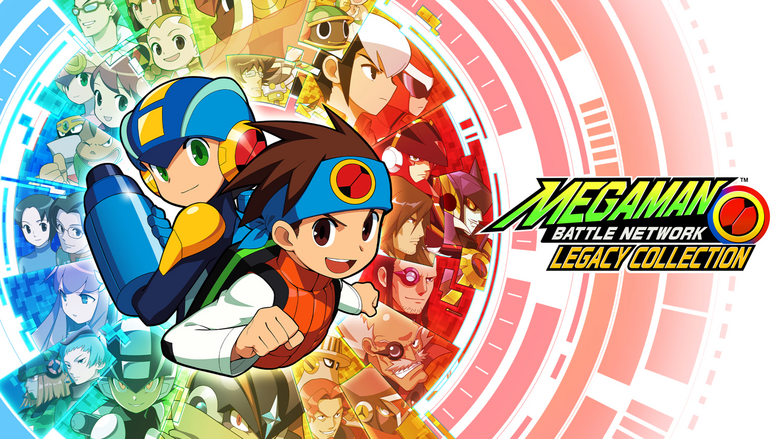
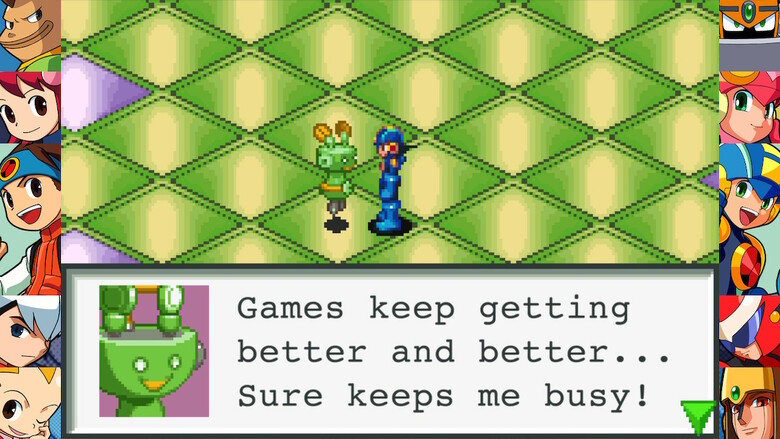
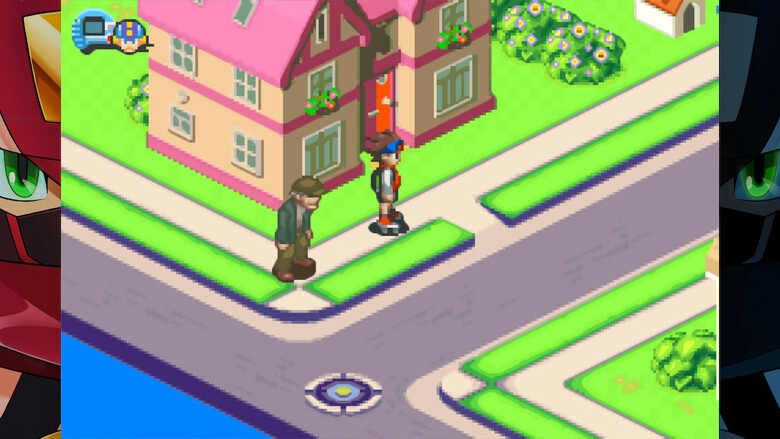
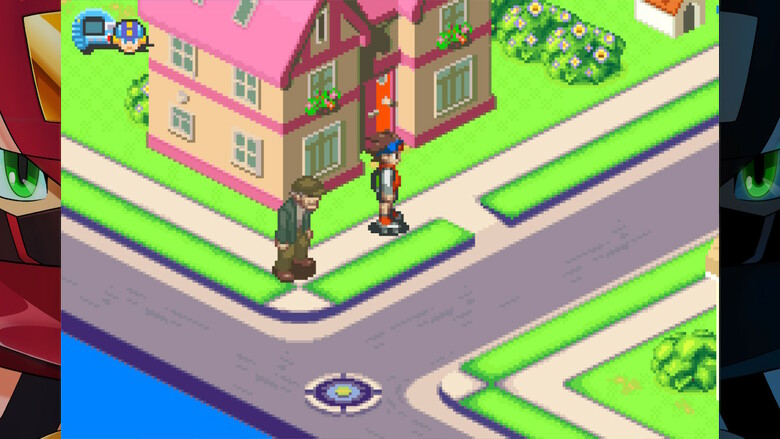
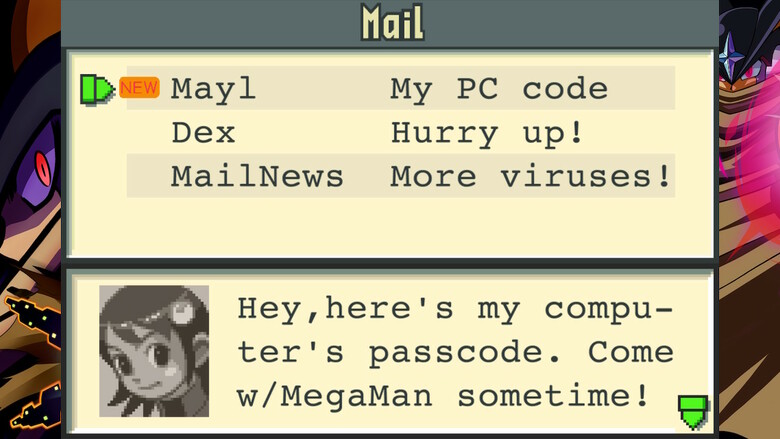
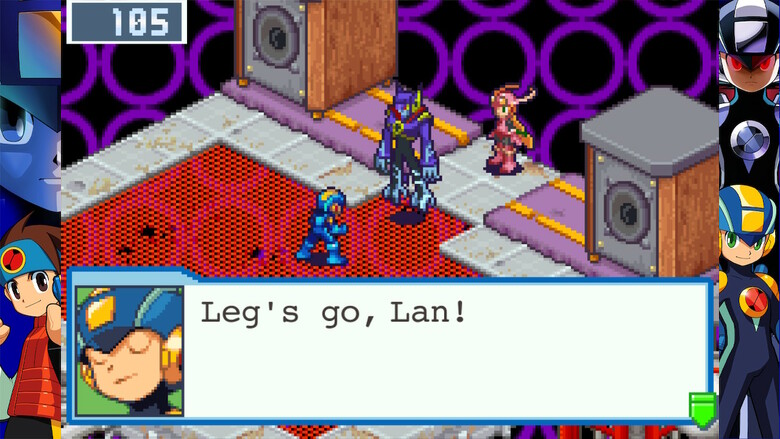
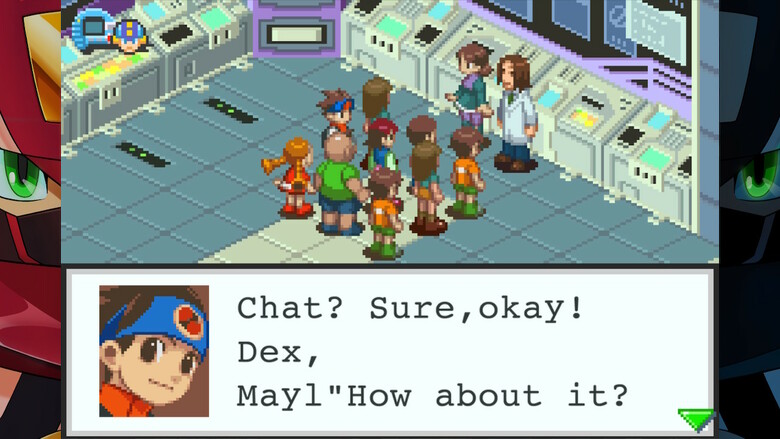
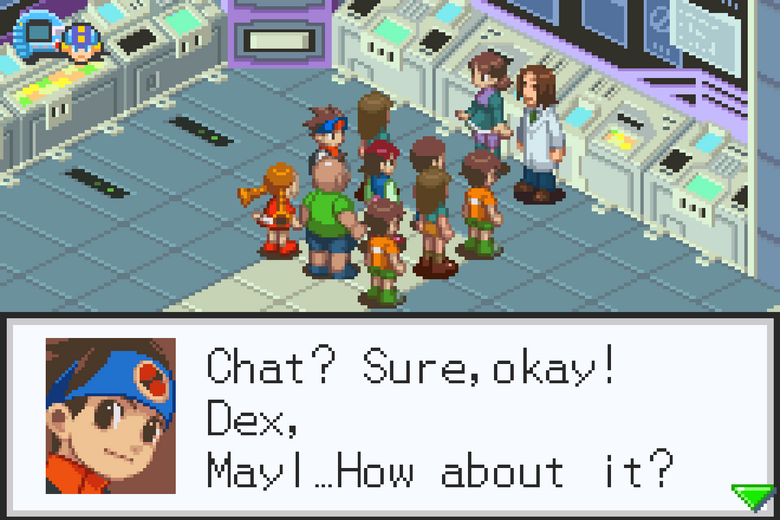
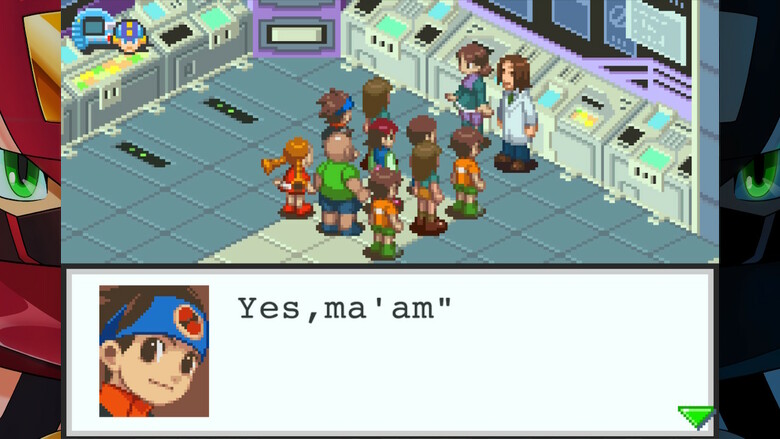
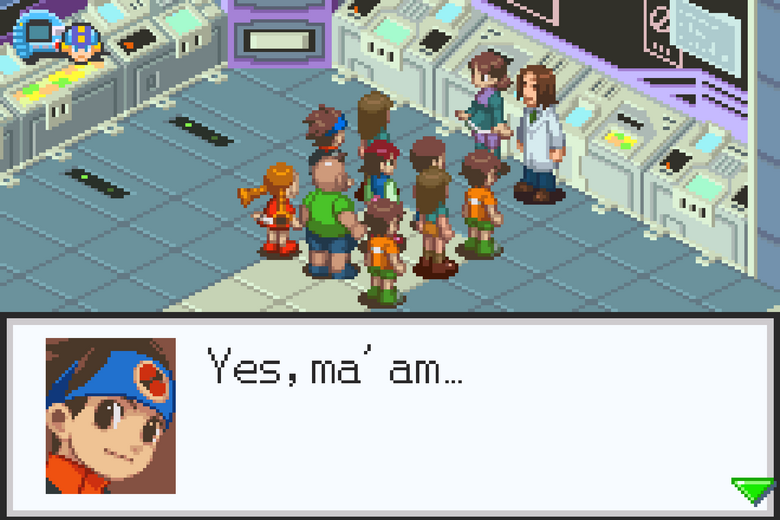
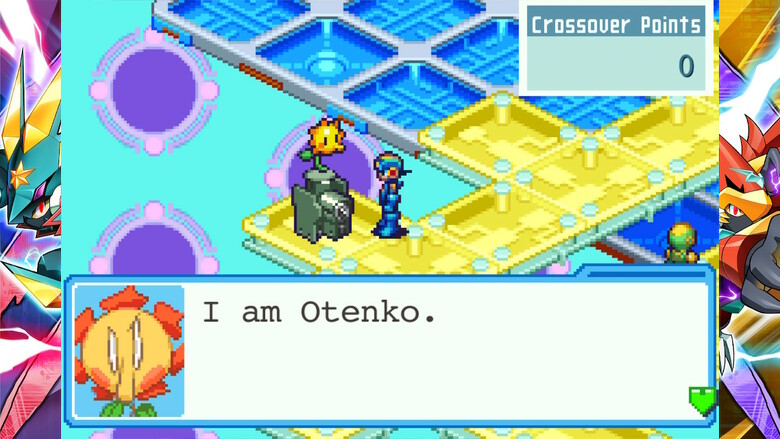
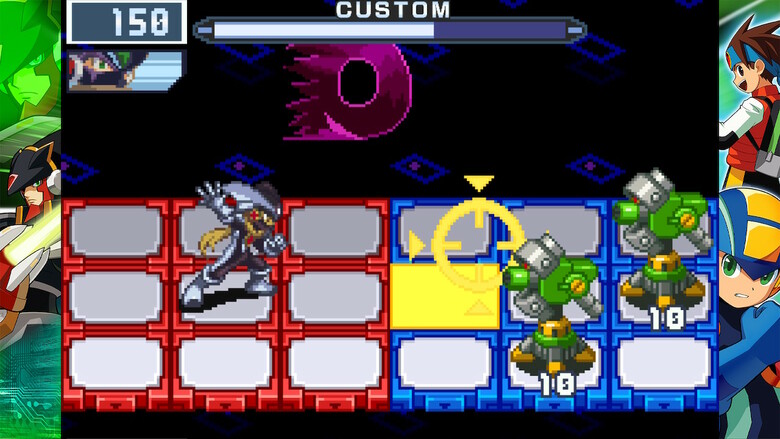
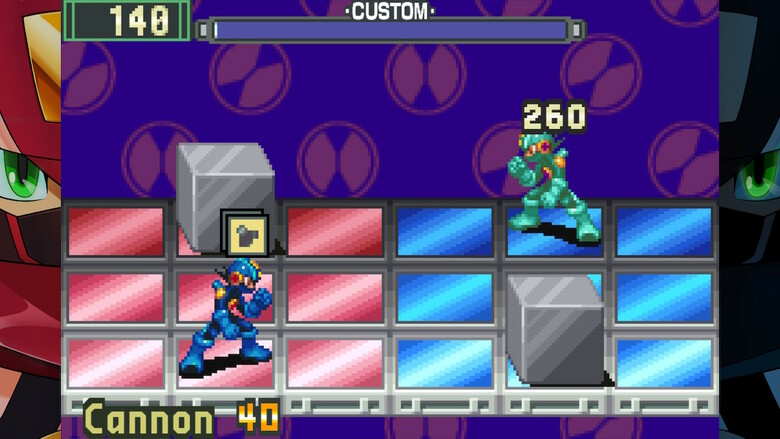
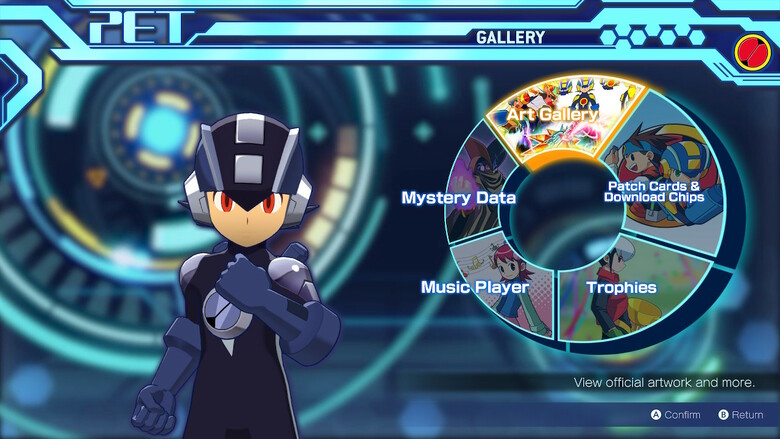
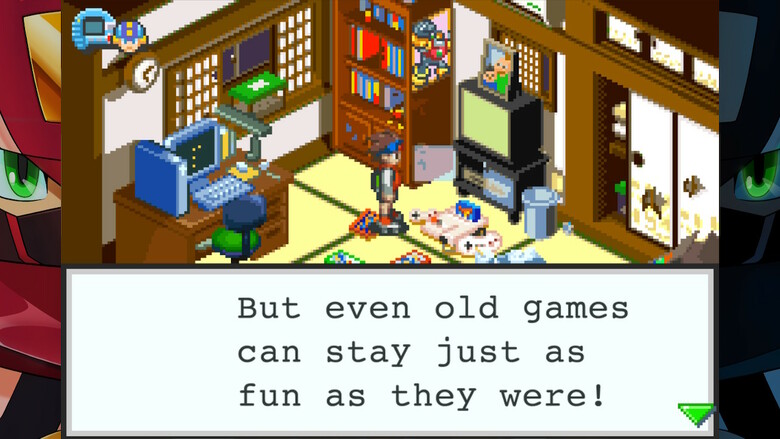
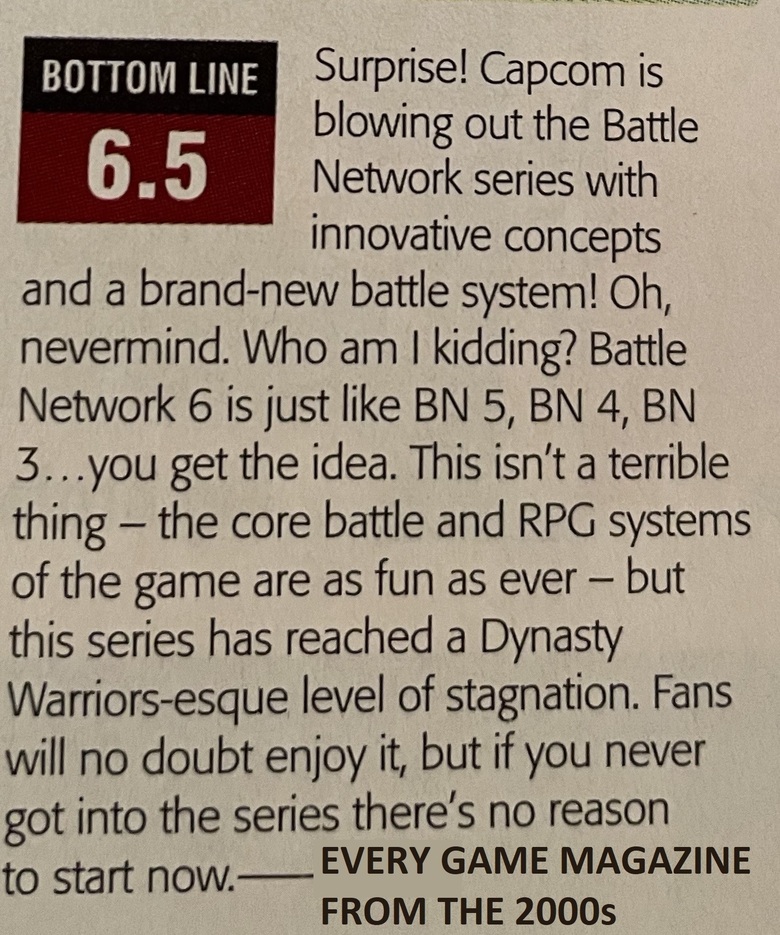
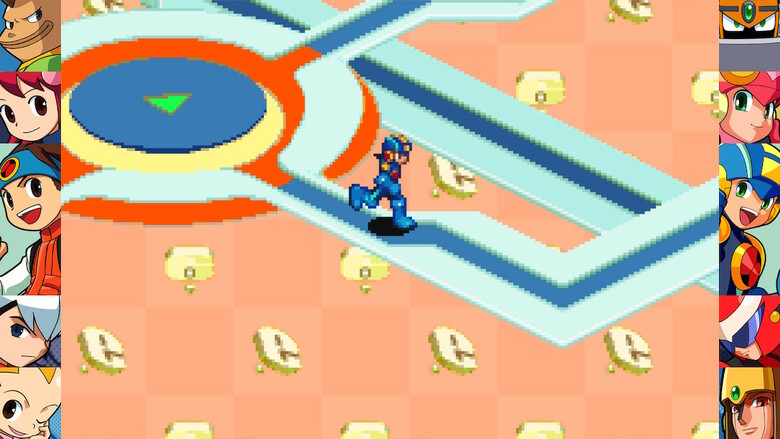
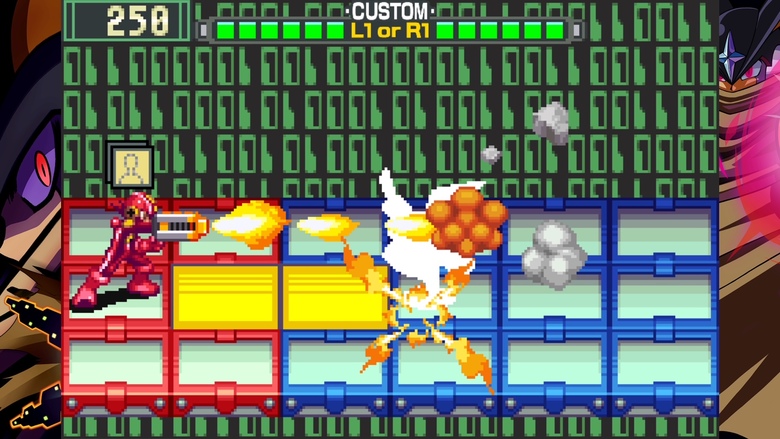
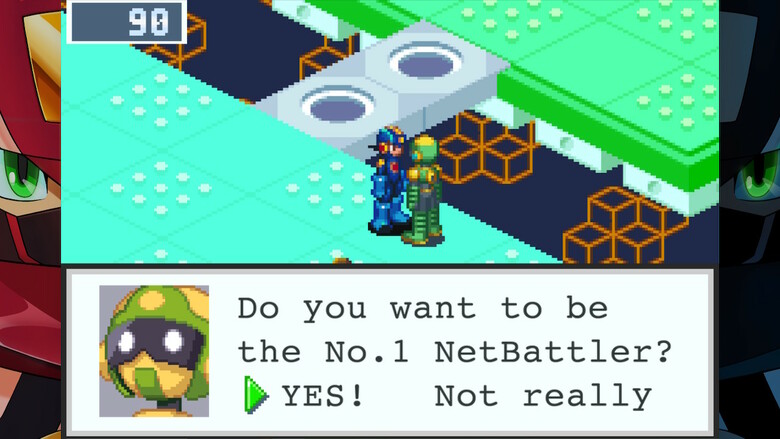
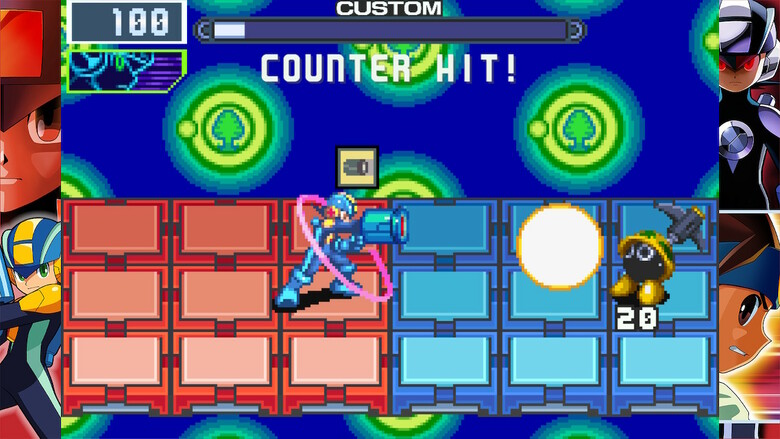
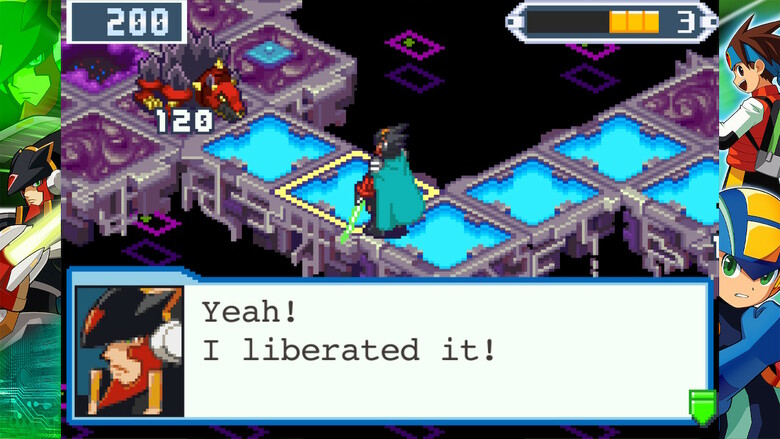
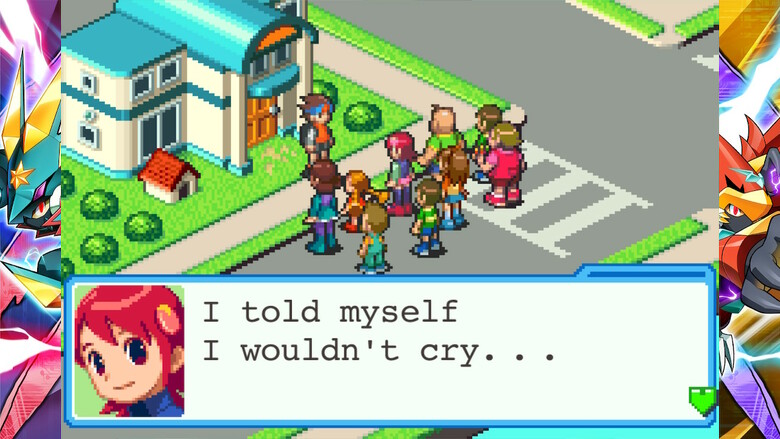
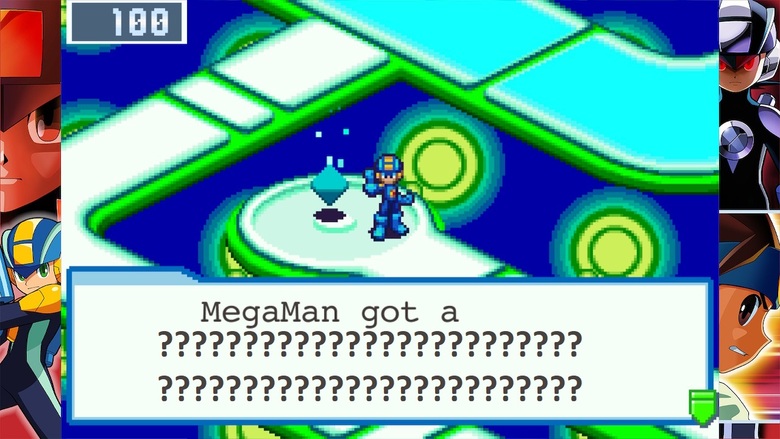
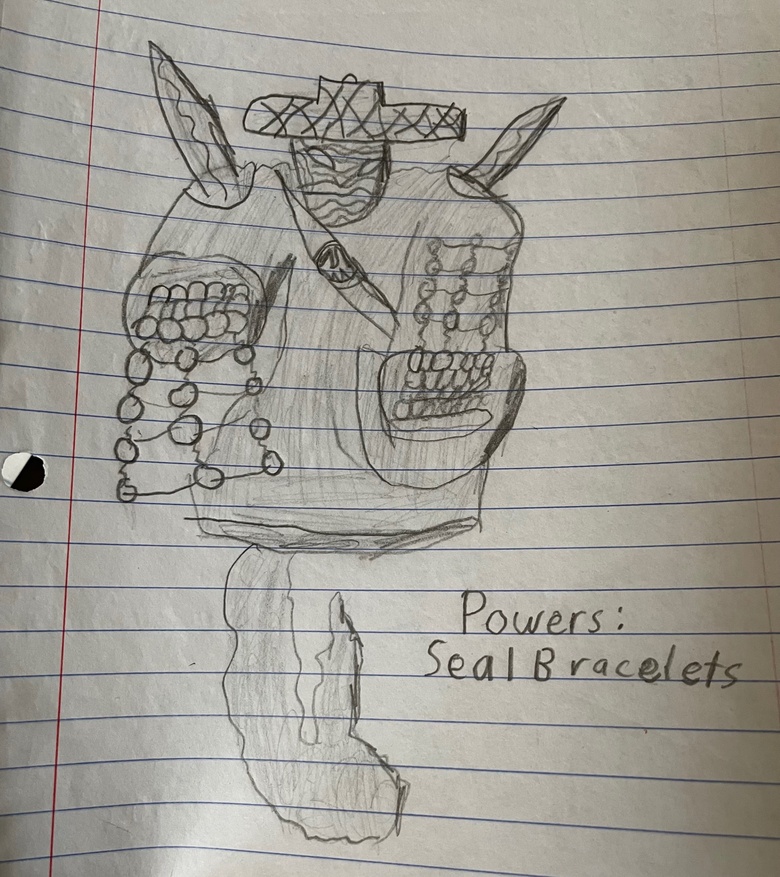
Comments (2)